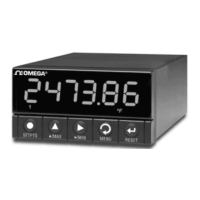8-1
8.1 MESSAGE STRING
8.1.1 “DATA” AND “NON DATA”
Each of the many types of messages between computer or printer and the meter is
transmitted or received as a string of ASCII characters. These characters are classified
as “DATA” and “NON DATA”.
“DATA” is the string of measurement or non-measurement values (see Section 8.2 and
Section 8.3) and can be classified as:
1. <data>: hexadecimal based values. Each nibble is converted to the ASCII
character and transmitted or received.
2. <data
>: is alphanumeric plain ASCII characters and need not be converted. It is
used in Remote Display Mode.
3. <value> is data which is transmitted against “X” or “V01” commands. These are in
decimal base, and each digit is converted to the ASCII character and transmitted
along with decimal point and sign.
“NON DATA” items are: recognition character(*), device address (nn), command prefix
letter (c), command suffix (cc), space (S or SP), carriage return (CR), line feed (LF),
checksum (hh), and units of measure (uuu). Checksum, device address, and
command suffix (cc) items are hexadecimal base, and each nibble will be converted to
the ASCII character and transmitted. The rest of the “NON DATA” items are plain ASCII
characters and need not be converted (see examples in Section 8.8).
8.1.2 BRACKETS AND SPACES
In the following text the position reserved for each ASCII character is represented by a
lower-case letter. If there must always be an ASCII character put into the message at
that position, no brackets are used.
Angle brackets, “<“ and “>”, are used to enclose names (or acronyms). In the actual
message these names will be replaced by the ASCII value of that name (the number of
those ASCII characters is not usually the same as the number of letters of the name
inside the angle brackets).
The occurrence of non-printing ASCII characters is also indicated by angle brackets
(e.g., “<CR>”).
Square brackets, “[“ and “]” enclose items which are optional, i.e., the message is still
valid when those are omitted.
8. Command and Response Structure

